A toddler climbing into a box




Older children adapt their strategy
- how to lift the leg up high enough to get it over the edge of the box
- maintaining balance
- controlling momentum
- how to hold onto the box sides without the hands getting in the way of the moving leg
The sequences of frames and video clips below illustrate these points.
Roan climbing into a box with high sides
In the first sequence below, the problem to be solved seems to be how to lift the legs up high enough to get each foot over the edge of the box while maintaining balance at the same time.
In the middle of the sequence there is an interesting little change of plan. Initially Roan holds onto the box with two hands. This is obviously better for maintaining balance, but means that the left arm will get in the way of the left leg being lifted over the side of the box. So it is moved and she relies on taking weight on the right hand only to complete the action.

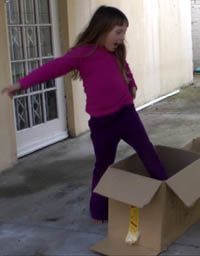
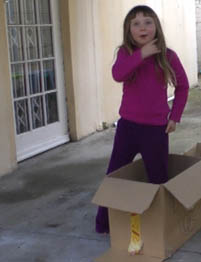
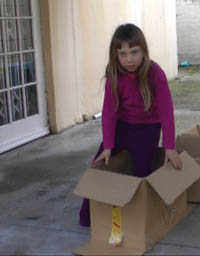

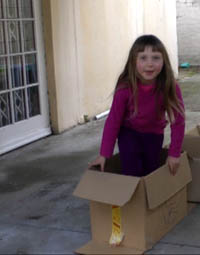
Will climbing into a box with high sides

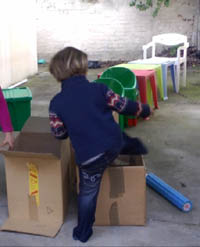

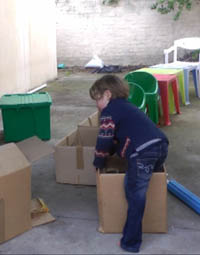
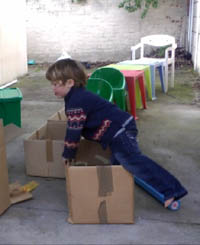
Roan stepping over a box with a low side
Roan manages to stay upright as she steps into the first box, but as she steps into the second box she looses her balance and needs to catch herself on her hands on the side of the box.
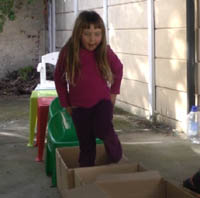
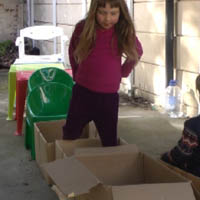
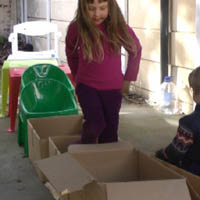
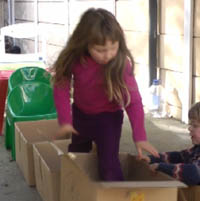
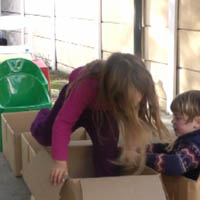

What did I learn reviewing the strategies these two children use to climb into a box?
Experience of stepping over obstacles has taught Roan and Will a great deal about:
- Matching the flexion abduction of the hip' to allow clearance of the foot, to the height of the box side
- Strategies for maintaining balance when lifting the leg high - this includes using the arms to counteract the large shift in the position of the COM on Roan's part. Will makes more active use of hand support to maintain balance.
- How to position the hands on the side of the box to allow foot clearance - this requires forward planning of the action and will have been learned through repeated experience of similar situations. t
For subscribers: Watching the video clips of Will and Roan climbing into boxes, gives a better insight into the smooth coordination between the body segments needed for this task. This coordination comes from having a great deal of experience of stepping over obstacles and climbing into boxes. Watch them here
The answer to the original question: how to teach a child to climb into a box
The answer to this question is: adapt the task to allow success and then change the task, to make it progressively more difficult. Provide verbal promoting as needed.
- Start with a larger box with low sides to allow easy foot clearance. Allow the child to experiment with different ways of getting into and out of the box. But also encourage the child to step into the box using hand support as needed.
- Putting the box next to a wall will allow the child to use light touch on the wall for balance.
- Then progressively use boxes that are smaller and have higher sides. A box with a smaller perimeter offers greater challenges as regards placing the hands so as to allow foot clearance.
What will the child be learning? Another opportunity to build a rich array of representations for solving motor problems.
This activity will provide the child with multiple opportunities to solve the motor problem and build a larger bank of representations that can be used in similar situations.
Climbing into a box requires a great deal of coordinated action for balance - another opportunity to build representations that can be used implicitly in similar situations.
Repeated climbing into and out of a box also builds strength and flexibility.